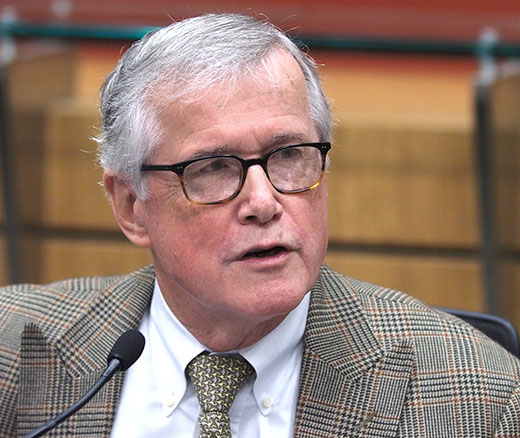Less Postacute Care for Medicare Advantage Beneficiaries Does Not Mean Worse Health
Research Brief: Shorter Stays in Skilled Nursing Facilities and Less Home Health Didn’t Lead to Worse Outcomes, Pointing to Opportunities for Traditional Medicare
In Their Own Words

The Trump administration, and Robert Kennedy’s Department of Health and Human Services, have drastically cut federal funding for basic medical research. There are doubtless many reasons, some ideological and some political, to dismantle an enormous federal agency that doles out taxpayer funds to academic researchers and their institutions in the quest to discover new knowledge about the functioning of the human body.
Of necessity the process for allocating funding is bureaucratic, inbred, and capricious. No written specifications exist for what the government buys when it funds basic research; instead, decisions are largely determined by what scientific peers consider “promising research,” a concept which, like jazz or pornography, is hard to define but some people think they know it when they encounter it. Why should the government risk hundreds of millions of dollars on efforts whose outcomes are uncertain?
Economists have an answer, but as usual the answer raises more questions. The answer is that knowledge is a “public good,” a product or activity of value that, once produced, can then be made available to anyone at zero additional cost. The problem with public goods is that, if you can get them for free, there is no reason why individuals will pay for them so they will not be well supplied by the market. The question that we return to over and over is: what is the best way to organize collective action to furnish such goods?
We keep asking this question because the answer is “politics,” and we know we can never be sure of getting that exactly right. We must decide how much and how to spend on a risky proposition: we know that zero spending will mean no discoveries, but, beyond that, the discoveries driven by spending increases are a mystery. The Congressional Budget Office guesses that a 10% cut in the NIH budget would, after a decade or two, reduce the number of new drugs per year by one or two, on a base of about 40, but it cannot say how valuable those drugs would be.
The NIH mission is, for the most part, to select and fund basic research done outside of government, primarily in private academic institutions but also in privately owned drug firms. This basic research has an annual budget only about a third as large as the aggregate research and development budgets of pharmaceutical firms. The goal is to produce knowledge about biological processes that may lead to discoveries of useful activities, but they may for some time just add to the general understanding of how things work, only to be translated later by drug firms in the more applied quest for a new treatment.
If one works back from major useful discoveries—medicines for hepatitis C, for cancer treatments, for weight loss, there are scores of examples of the discovery by applied researchers that some basic research unlocks the secret of how to produce an effective way to treat or prevent illness.
It is also inevitable, however, that some discoveries, even the kinds that win Nobel Prizes, convey new knowledge with no immediate application. This kind of after-the-fact “waste” is inevitable in the discovery process—scores of plausible ideas do not pan out—fueling criticism of the enterprise and calls for a better process, if only one could be discovered.
We know from studying the drug development process that the mortality rate of promising new entities is high: only 10% of the ideas that already made the hurdle to phase 1 trials eventually become a marketable product, and even then most of the new products never sell in large quantities.
Amid this enormous uncertainty, how might a taxpayer judge whether an extra billion dollars more or less for the NIH will produce new drugs of high enough value to justify the investment?
To pose this question is to approach nihilism: there seems to be no way to work through such a miasma of conjecture. However, it is important to do so since the Trump administration proposes (though Congress is unlikely to agree) to cut the NIH budget by 40% and, probably even more likely, to impede or dismantle the apparatus by which the NIH doles out grant money to researchers public and private.
The current method is very similar to peer review of journal articles: outside experts judge the innovativeness and likelihood of success of detailed proposals, submit critiques, and eventually approve and score some of the applications. How far down the list of approved projects funding is provided then depends on the NIH budget.
This approach has been criticized by a tech executive as Stalinist and top down. That seems to miss the mark that NIH officials, from program officers to top management, rarely override the verdicts of the expert external review panels, and can at most set broad priorities. One set during the Biden administration, to fund more research on health problems of marginalized communities, has been particularly targeted for excision. But is there a better way to allocate funding, not only for the NIH but for the whole biomedical research enterprise?
One way to see an alternate path is to note that the NIH is not the only, or even the most important, funder of basic medical research. Its $40-plus billion-dollar budget is about the same as an estimate of basic research spending by private sector drug firms in the U.S., who also spend another $100 billion or more on clinical trials to demonstrate safety and effectiveness.
Add to this the substantial and growing support from private foundations and consortia, such as the Howard Hughes Medical Institute or the Cambridge, MA-based Arena Bioworks, which is targeted primarily at younger researchers and translation of riskier ideas than the more certain and incremental projects the NIH supports.
Perhaps a better strategy is to have the NIH concentrate on just those kinds of activities, and not have it try to move into more applied or translational research that bridges the “valley of death” between preclinical discovery and applied drug development. There is evidence that drug firms and the venture capital that backs new starts are moving further down the pipeline to capture and patent promising ideas closer to basic research, and this funding is likely to grow if the NIH were to cut back that portion of its portfolio.
So how can the category of risky but visionary biomedical basic research, an unequivocally public good, be funded if not through the NIH?
One suggested method (don’t laugh, this is serious) is to fund prizes for discoveries once made rather than fund projects with diffuse goals for discovery. Pay for outcomes, not for process, the slogan goes. Raise the funding for promising work from investors who are willing to share your bet that you will collect the prize.
Another possibility, but one open to corruption in the public sphere, is to follow the Hughes Institute model of generous discretionary funding for “people not proposals,” awarding sizeable research budgets to the most promising researchers, assuming they can be identified in advance and incentivized later.
The third, already suggested, is to encourage patenting of ideas at earlier stages, which will attract private funding and necessarily lead to full disclosure of findings in a patent application—but at the cost of limiting access to the public good. That snag, however, can be eased if other firms can buy rights to use the patented intellectual property for a mutually agreeable sum.
This is the place to say that more research on this topic is needed, and that is surely true.
There are doubtless other imaginative ideas about how to increase the supply of imaginative ideas that are worth trying. Relative to the total federal budget, the billions involved here are a tiny fraction though they add up over years to real money. But the potential for health gains from new discoveries is of much greater value.
Mark V. Pauly PhD is a former Executive Director of the Leonard Davis Institute of Health Economics at the University of Pennsylvania. He is also Bendheim Professor Emeritus in the Departments of Health Care Management and Business and Public Policy at The Wharton School.

Research Brief: Shorter Stays in Skilled Nursing Facilities and Less Home Health Didn’t Lead to Worse Outcomes, Pointing to Opportunities for Traditional Medicare

A New Call to Action Urges Three Ways State and Local Leaders Can Act To Ban Additives, Improve Food Labels, and Restrict Marketing to Children

New Therapies Inspire Hope, Even as Access and Treatment Risks Continue to Challenge Patients and Providers

The Wharton Professor Produces a Compendium of Economics Wisdom for Health Care Pros

Announcing Bold New Goals While Crippling the Infrastructure Needed to Achieve Them

LDI Fellows Call for Real-Time De-Escalation Teams and Safer Staffing Ratios to Prevent Chaos Before it Erupts